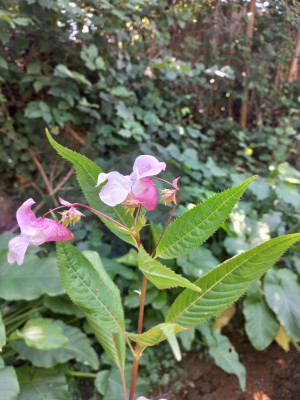Himalayan balsam (Impatiens glandulifera) was once a popular garden plant, but its weedy nature now means it is banned from sale or propagation in Aotearoa New Zealand.
It’s a slim annual plant that can rapidly grow to 2.5m tall, generally appearing in Tasman over summer, with pretty pink flowers that develop into seed pods during February/March.
Moderately shade tolerant, each seed pod can contain 4-16 seeds and has the unique characteristic of being spring loaded. When the pods mature, they explode with enough force to propel seeds up to 7m away from the parent plant.
This feature makes our job interesting, as collecting these seed heads before they explode can be like handling a miniature explosive device!
It grows along streams and in wetland areas, competing with native plants for light, space and pollinators (bees). It seeds heavily, allowing it to spread down waterways, and when uncontrolled, can dominate entire stream margins and terraces within a few years.
A new infestation of Himalayan balsam was recently discovered in Hill Street in Richmond. The downstream spread saw plants found along Hart and Bateup Road, Ivy Crescent and down through Borck Creek almost as far as Lower Queen Street, in the space of a couple of years.
New sites have also been found in the Matiri Valley, near Murchison and on the margins of the Buller River, the result of seed deposited by the big floods of recent years. The dumping of garden rubbish over banks also contributes to the spread of weeds like Himalayan balsam.
If this pest plant is in your garden, or you’ve seen it around, please contact our Biosecurity Team at biosecurity@tasman.govt.nz or on 03 543 8400.


